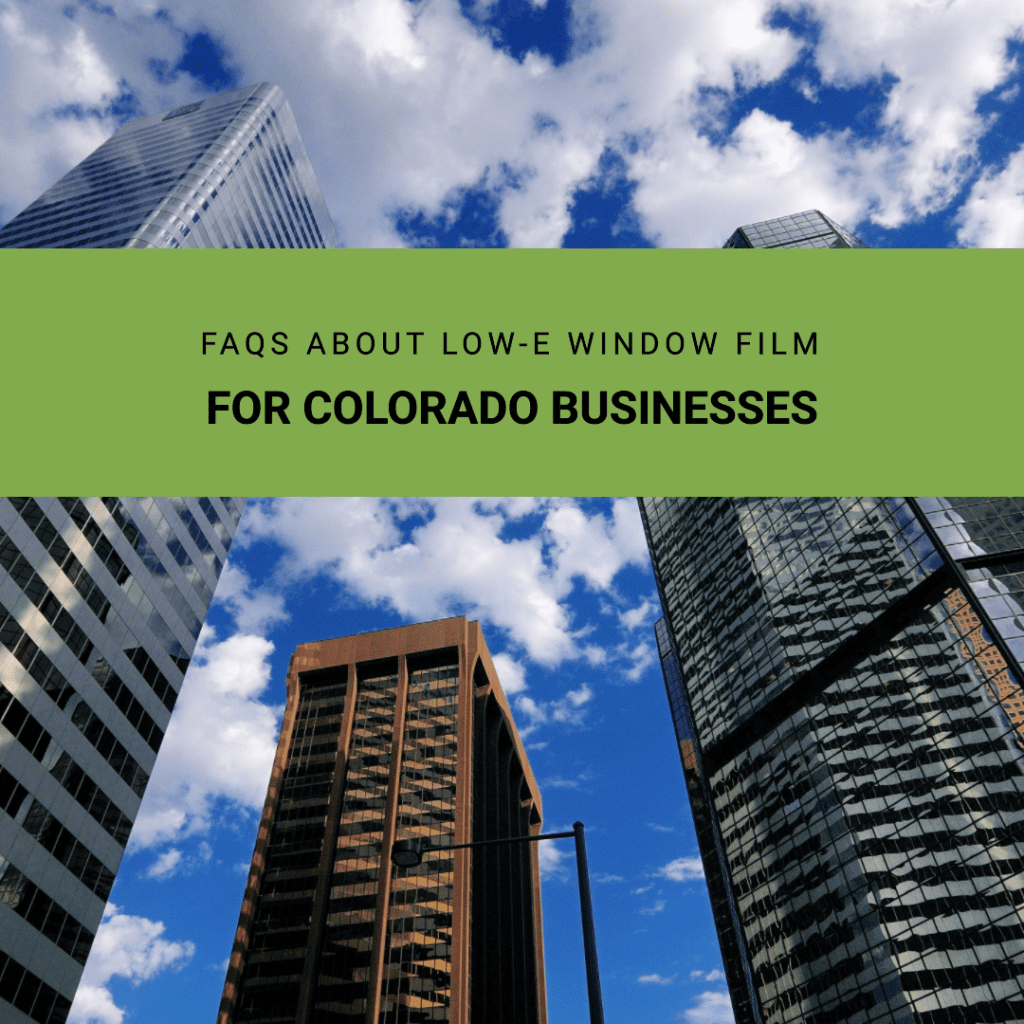

The stunning Colorado landscape offers boundless opportunities for work and play. But our extreme climate also brings challenges in creating comfortable and energy-efficient commercial spaces. This is where low-emissivity (low-e) window film can make a dramatic difference for businesses across Colorado. In this article, we’ll explore the benefits of low-e window film for Colorado commercial buildings in cities like Denver, Colorado Springs, Fort Collins, Boulder, and Pueblo. We’ll answer common questions about how low-e film works, what types are available, and why it’s an ideal solution for Colorado.
Understanding Low-E Window Film
Low-e window films are thin polymer sheets coated with a microscopic layer of metal or metallic oxide. This specialized coating allows the film to reflect infrared heat. Low-e films block up to 82% of infrared light while allowing visible light to pass through.
How does low-e window film work?
Low-e films prevent heat gain in summer and heat loss in winter by reflecting infrared radiation rather than absorbing it. This improves the insulating performance of windows year-round.
During cooler months, indoor heat is reflected back into the room. In warmer weather, solar heat is rejected back outside before it can enter the building. Low-e films also reduce damaging ultraviolet rays that cause fading.
Types of low-e window film
Low-e films come in a range of tinted and clear options optimized for different climates and orientations. Premium low-e films reject the most heat while maintaining visibility. There are also specialized films for retail storefronts, offices, hotels, and other commercial spaces.
Benefits of Low-E Film in Colorado
Low-e window films offer major benefits for Colorado’s extreme climate. By reflecting heat and reducing solar gain, low-e films increase energy efficiency, lower HVAC costs, protect interiors from UV damage, and enhance occupant comfort. Low-e films provide effective passive temperature control and sustainability upgrades.
Energy Efficiency
Low-e window films dramatically improve energy efficiency in commercial buildings. By reducing heat flow through windows, low-e films lower HVAC costs year-round.
In fact, low-e films can cut energy use by up to 30% in the summer and 25% in winter. These savings help buildings achieve sustainability certifications like LEED and Energy Star.
UV Protection
Colorado has intense high-altitude sunlight. Low-e films block up to 99% of ultraviolet rays that cause fading and deterioration. This preserves furniture, flooring, artwork, and textiles.
UV protection also provides health benefits by reducing eye strain and skin damage for building occupants.
Comfort and Climate Control
By regulating heat transfer and glare, low-e films create consistent, comfortable conditions indoors. Rooms stay cooler in summer and warmer in winter. Hot and cold spots are minimized for equilibrium.
Low-e films also reduce temperature fluctuations when the sun passes over windows. Buildings stay comfortable and energy efficient throughout the day.
Cost Savings and ROI
While low-e window films involve an upfront investment, the energy savings typically pay for the cost in 3-5 years. In fact, low-e films are one of the most cost-effective solutions for enhancing building performance.
Federal tax credits, utility rebates, and green building incentives can further accelerate the return on investment. Low-e films qualify for the Commercial Buildings Tax Deduction providing enhanced tax benefits.
Installation and Maintenance
Professional installation is crucial for proper adhesion and results. The film must be custom-cut for each window, then applied using a clean, expert process. High-quality low-e films come with a lifetime warranty when installed by authorized dealers.
Basic maintenance involves cleaning the film 1-2 times per year using proper techniques and compatible cleaners. Avoiding abrasives preserves the coating. Films may need replacing after 7-10 years.
Choosing the Right Low-E Film
Climate impacts the ideal performance specs. We recommend top-tier films with high visible light transmission and low reflectivity to maximize light and views.
Aesthetically, low-e films come in clear and tinted versions. Tints block glare while mirror films offer a modern reflective look. Be sure to comply with any regulations, ordinances or HOA rules.
Look for a reputable dealer who can recommend the optimal film for your building type, orientation, and visibility needs. A solar assessment helps determine the ideal solution.
FAQs About Low-E Window Film for Commercial Buildings
Check out these FAQs to get more information about installing low-e window film for your Colorado commercial building:
What are the benefits of installing low-e window film in commercial buildings?
The key benefits are lower energy costs, UV protection, visual comfort, and temperature control. Low-e films also enhance aesthetics, increase occupant productivity, and reduce environmental impact.
Is low-e window film suitable for all types of commercial windows?
Low-e films are designed to adhere to glass windows and doors. Certain films can also be applied as skylight retrofits. Films are not recommended for plastic, acrylic or polycarbonate substrates.
Does low-e window film affect natural light and visibility inside the building?
High-performance low-e films maintain excellent clarity and visible light transmission. Visibility depends on the specific film chosen – the most transparent films provide minimal impact.
Is low-e window film an environmentally friendly choice for commercial buildings?
Absolutely. By reducing energy consumption, low-e films provide major sustainability benefits. They also decrease the need for interior window treatments. Low-e films are inert once installed and recycle-friendly.
Can low-e window film be retrofitted to existing windows in a commercial building?
Yes, low-e window films can be retrofitted to existing glass facades, windows, and doors to upgrade performance. Retrofits provide energy savings without replacing windows. The film is applied directly onto the interior glass surface.
Enhance Comfort, Savings, and Sustainability
We hope this overview has provided valuable insights into the many benefits of low-e window film for Colorado commercial buildings. Upgrading your windows with low-e film is a smart, eco-friendly solution to lower costs while creating optimal indoor environments.
To further explore the potential of low-e window film for your Denver, Colorado Springs, Fort Collins, Boulder, or Pueblo property, contact Colorado Commercial Window Tinting today for a free estimate. Our experts are ready to help analyze your needs and recommend the ideal films to take your building performance to the next level.


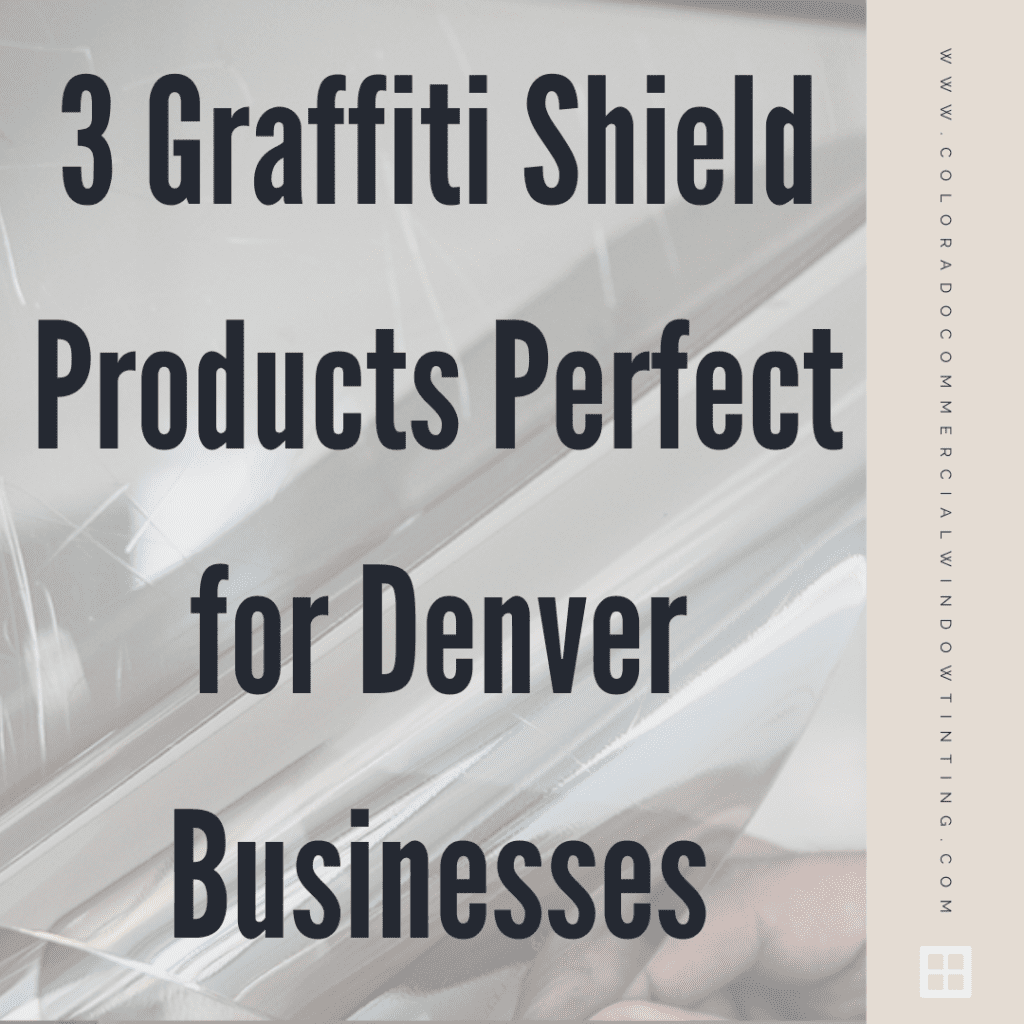
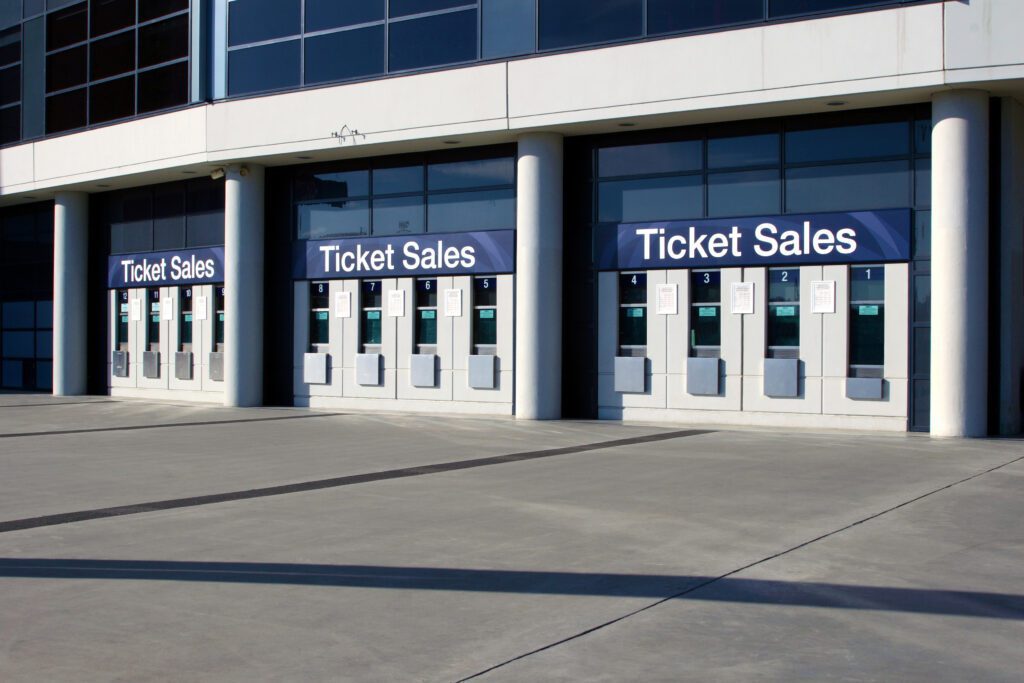
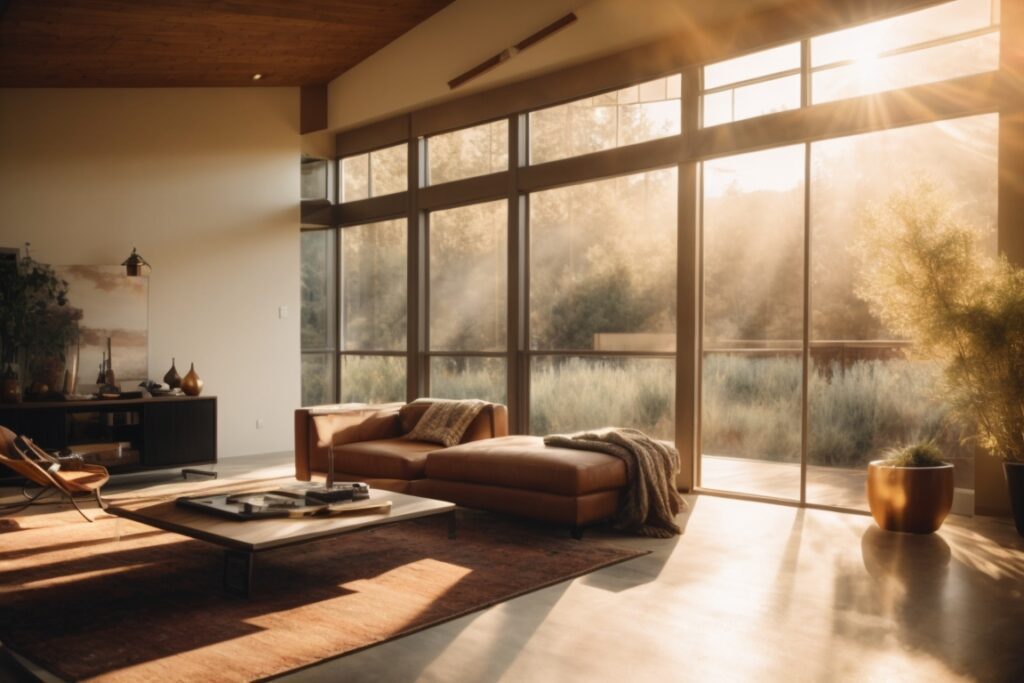
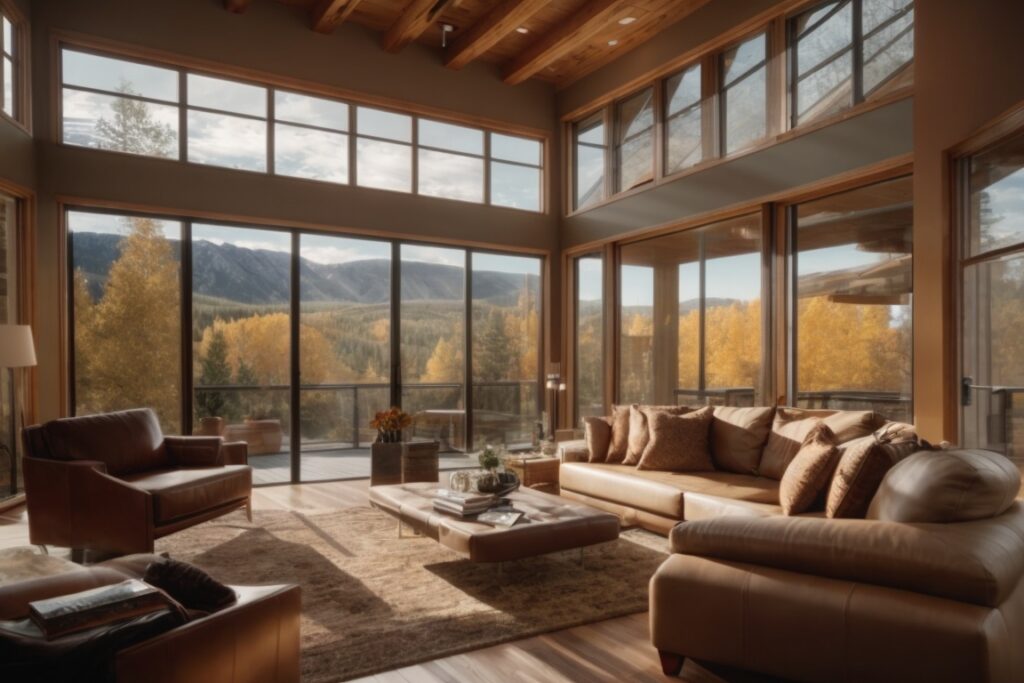
About The Author: Mike Kinsey
Mike is the operations manager for Colorado Commercial Window Tinting, the largest commercial window film company in the state of Colorado. Mike has been working in the tinting for over 15 years and has installed over a combined 250,000 square feet of window film for hotels, restaurants, retail stores, offices, and commercial properties all throughout the Denver, Boulder, Ft Collins, and Colorado Springs metro areas. Mike's extensive product knowledge, construction experience, and project management skills make him an expert in his field. In addition to overseeing all installs, Mike also is in charge of sales and customer relations for the Colorado office. He is certified by 3M, EnerLogic, and AIA for continuing education.
More posts by Mike Kinsey